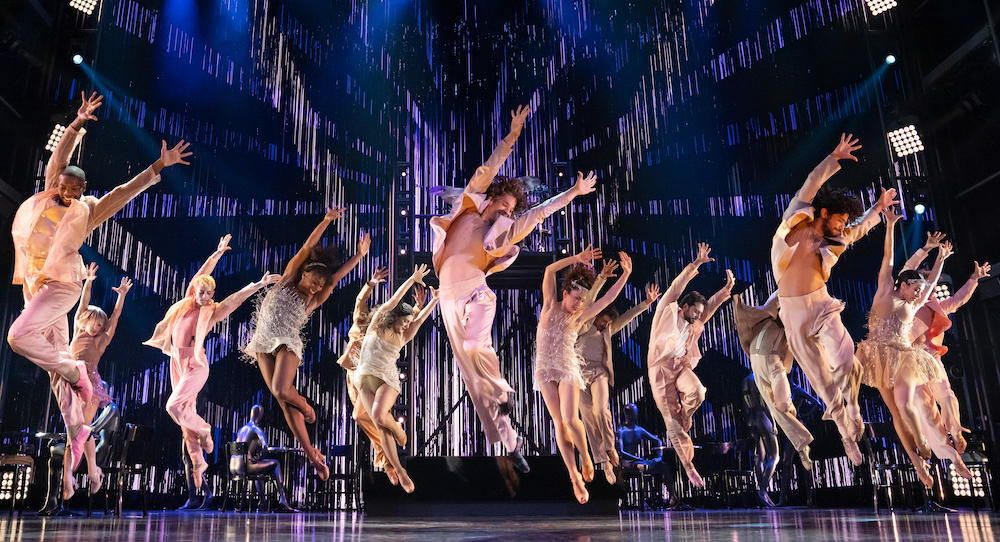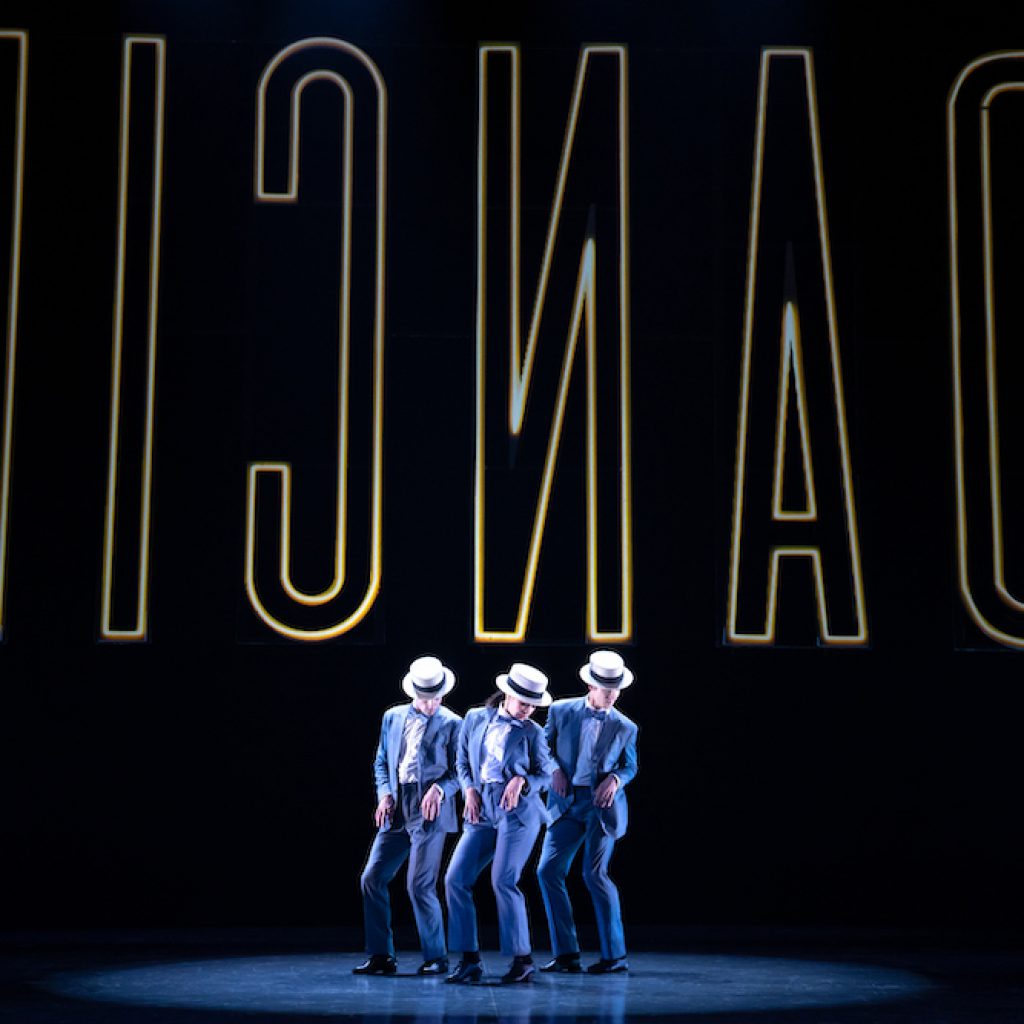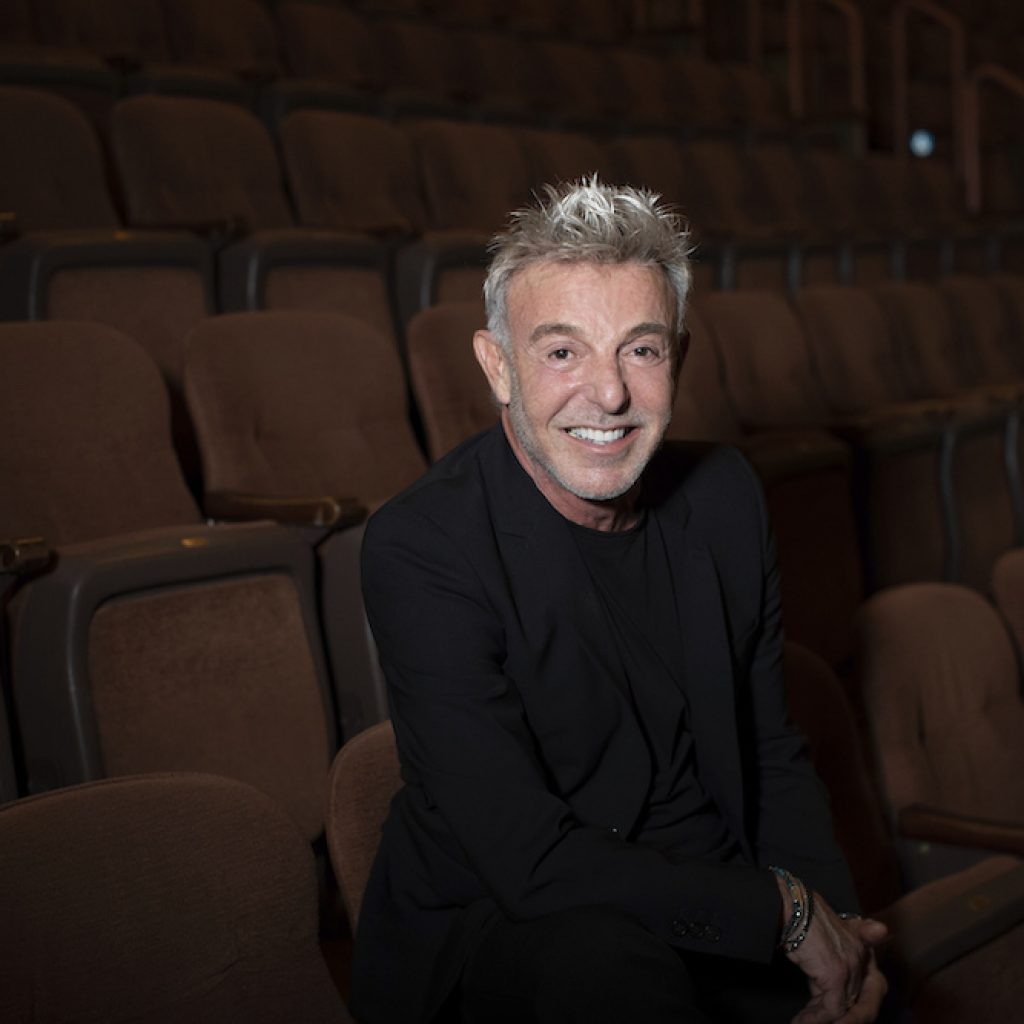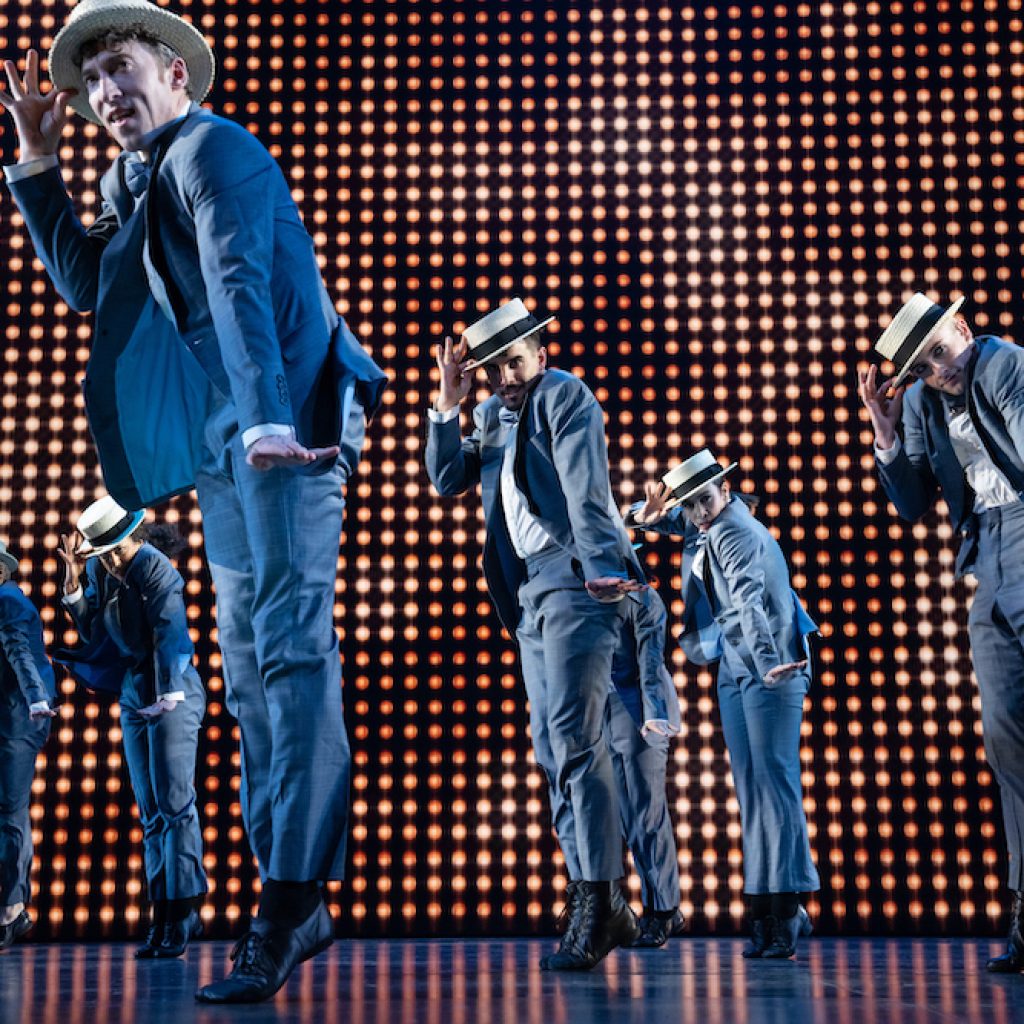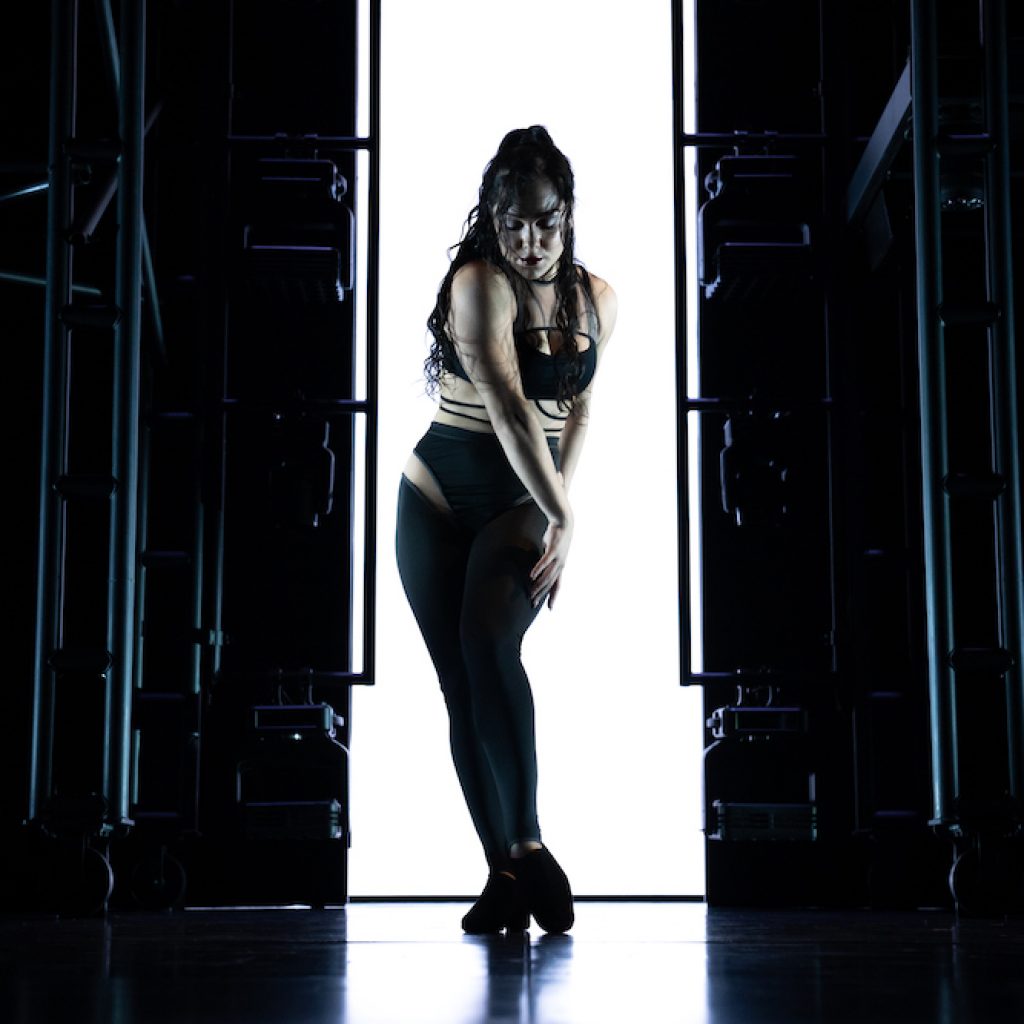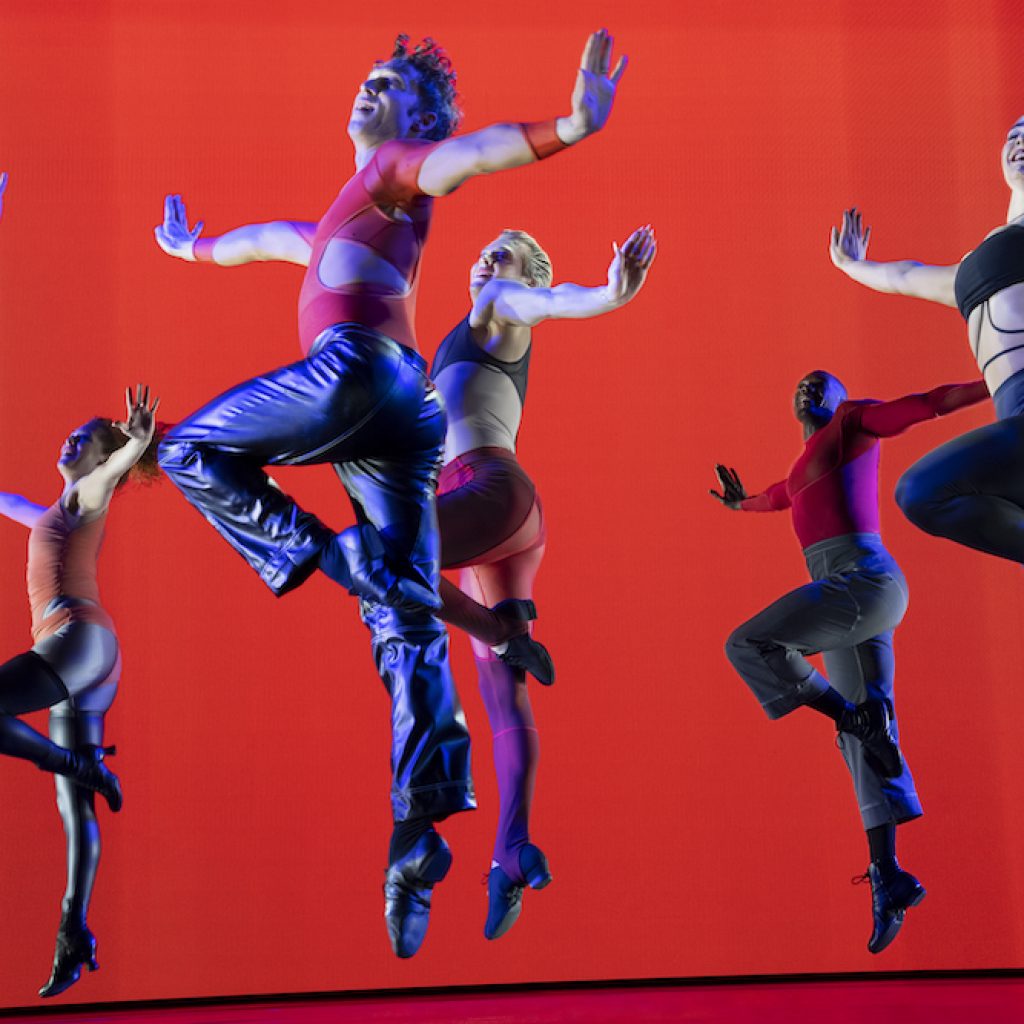Dance Informa had the pleasure of learning all about Bob Fosse’s Broadway show, DANCIN’, through electrifying conversations with Tony Award-winning Director Wayne Cilento and Co-Dance Captains Mattie Love and Gabriel Hyman. First premiered in 1978, the show returns 45 years later with Fosse’s original choreography and a 21st century twist. Read on for behind-the-scenes insights into the process of putting the show together, its many memorable numbers and the iconic Bob Fosse himself.
What’s DANCIN’ all about? What can audiences expect, and what makes it different from other Broadway shows?
Wayne Cilento, Director/Musical Stager
“There isn’t anything like DANCIN’ on Broadway. Forty-five years ago, Bob Fosse wanted to do a show centered around dancers as opposed to the usual structure of a star to be danced behind. A Chorus Line, which was created shortly before DANCIN’, was born from Bob’s belief that there were a lot of mediocre Broadway shows supported by great dancing and choreography that had no power to determine whether the show made it or not. A Chorus Line was a huge step forward for dancers that Bob took further with DANCIN’. Most people think of Chicago when they think of Fosse: black lingerie, high ankle boots, derby hats, dancing in a triangle in absolute unison. But that’s only one part of Fosse. If you go back and look at his film career, he’s explosive. He flies across the floor. I want to show the scope of all his different styles, and I’m hoping that people walk away knowing the essence of who Bob was without banging them over the head and spelling out his career.”
Gabriel Hyman, offstage Co-Dance Captain
“This version of the show is a review and a celebration of all of Fosse’s work. The cast comes from a wide range of backgrounds and styles, and it’s incredible to see how everyone interprets his choreography. When I first started learning the show, I thought, ‘Wow, I didn’t know Fosse had this style under his belt.’ Audiences can expect to see a lot of Fosse classics alongside numbers they might not have realized were choreographed by Fosse.”
Mattie Love, onstage Co-Dance Captain
“DANCIN’ is an opportunity for dancer-first artists to show audiences that we can do more –– sing and act –– even though we’re not always cast to do so. The show is hot, energetic and invitational without being in your face. It doesn’t follow a strict storyline; unlike your typical Broadway show, each dancer comes back as someone else later. What’s so cool about Fosse’s work is that it’s precise and deliberate, but at the same time, it leaves ample room for audience members to fall in love with the cast members and their interpretations of the choreography.”
Wayne, I know you had the opportunity to work with Bob Fosse many times over the years. How did you first meet him? What was he really like?
Cilento
“I didn’t start out as a Fosse dancer. While I was performing with Liza Minnelli, I got an audition for DANCIN’ with Bob even though the show was already cast and I was out of town doing The Act. At the audition, we danced for 45 minutes, and when I sang, he raised my key three times. For awhile after that, I heard nothing. Then, on opening night of The Act, I was dead center in a low plié and there he was staring at me from the audience. I was shocked. When I ran into him at the afterparty, he said, ‘I want you.’ ‘What?’ ‘I want you in the show. It’s fully cast, but I will figure it out.’ I said yes and begged him not to tell Liza, and that’s how it started.
Bob was quiet. Very internal. Very private. He never really had assistants or associates that helped him create choreography, and he was always very involved in the creative process. He never made things on the spot. Always came in totally prepared, and he was a complete perfectionist. He was shy, seductive, charismatic and manipulating in a very charming way. I’m sure he rode people along the way, but he was always very kind to me. He put so much trust in me, which gave me a strong sense of responsibility. If he was looking at me to judge his own work, then I had to do it perfectly. I was very concentrated because he was very concentrated.
Yes, I got accolades for how I did his work (including a Tony as a dancer in the original Broadway production of DANCIN’) which I’m proud of, but the trick is that I’m Wayne Cilento and I do Bob Fosse –– he gave me the luxury to interpret his choreography in the way I dance. I’m trying to do the same with the show’s new cast. There’s a balance to be struck between the idea that ‘these are the steps and this is choreography,’ and the encouragement to bring oneself to those steps. We brought life to his material all those years ago, and now this new talented group is enlivening it again in a different way through their own interpretations. I have to put them back in the box every once in awhile –– remind them to stay true to the steps –– but I’d rather that than watch robotic movement that doesn’t embrace the breadth of experiences offered by the show’s diverse numbers.”
What’s it like to return to this work after nearly half a century? Do you think it has aged well?
Cilento
“It’s wild to return because I never thought I would. It’s been 45 years since I performed in the original production, and I’m honored to be directing this first ever revival. When I was approached four years ago and said yes to the project, a lot of questions arose. At the time of the original production, there was no tech –– not even moving lights. None of the production elements that are folded into Broadway shows now were around at that time. I knew it wouldn’t work in 2023 the way it worked in 1978, so it needed to be updated. Then the question became how to update it without destroying Bob’s work. All of the choreography stayed intact, but the environment of the show changed.
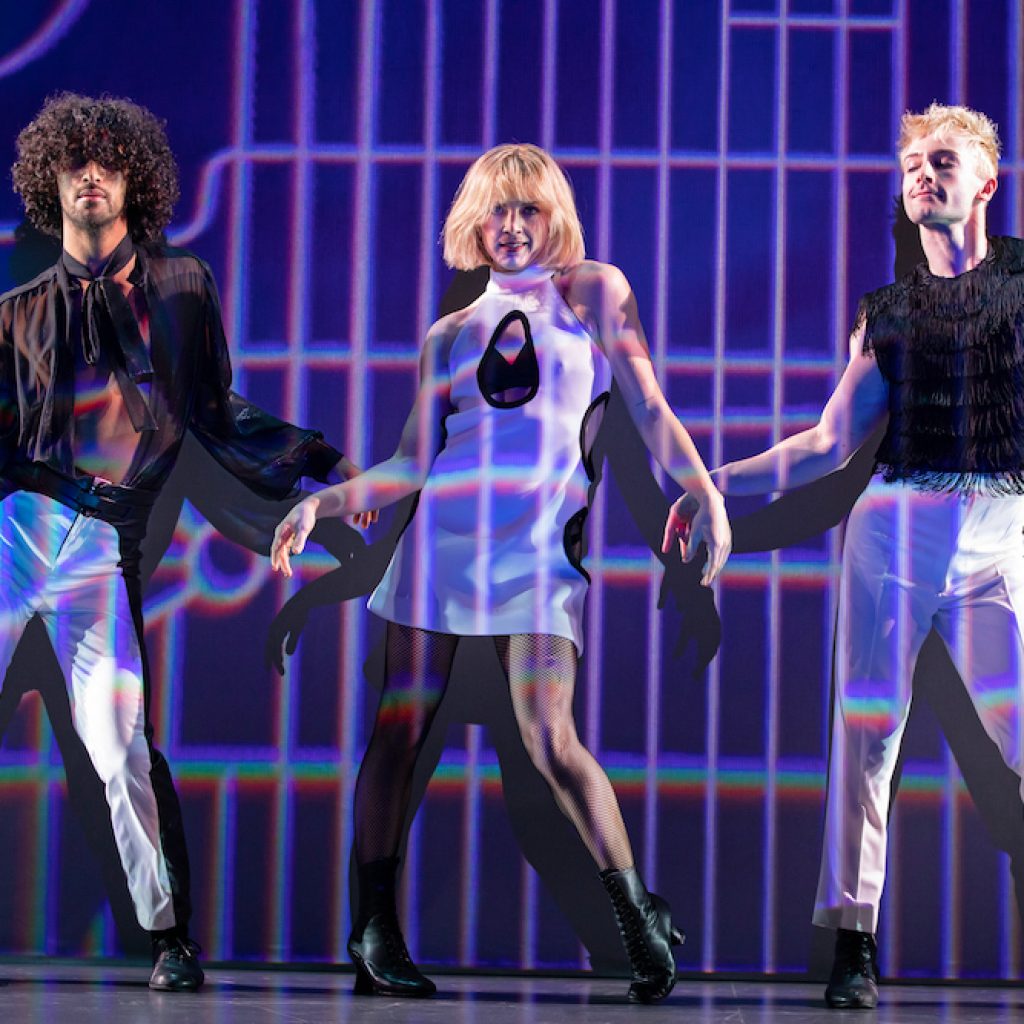
Eight years after DANCIN’, Bob called me and asked me if I wanted to do Big Deal. That creative process was essential because it allowed me to experience Bob in a different way. By that point, he’d done a lot of film work, and his way of thinking about a Broadway musical had evolved with his filmic eye. It was all very fluid, and felt like he was looking through a lens; there were crossfades, music blending into dialogue, dialogue blending into movement and staging. I think that if Bob were remounting DANCIN’ now, he’d use modern film techniques because his eye was already there. So, I thought the best way to represent Bob today was to imagine I was transforming the show DANCIN’ into a film. Bob was also infatuated with rock and roll so I wanted the revival to be a rock concert, dance concert and theatrical event wrapped up in a film environment. It’s a lot, but it gave me a premise to get in there and do some unusual stuff.
During the process, I started juggling numbers to find a configuration that made some sense. Oddly enough (or perhaps unsurprisingly), I ended up back at his original order with one exception. I added ‘Big City Mime,’ a ballet composed of vignettes about a man who came into the city, which was cut from the original version. I thought it was the ideal opportunity to tell the story of Bob’s career. He ran across panhandlers and hooker and pimps. He went to massage parlors and baths and Burlesque clubs. And then he wrapped and stored all of that information to later devise Broadway musicals about. The number is exactly where it was during our Boston performances before it was cut.”
Mattie and Gabriel, what’s it like to dance Fosse’s original choreography? What do you find most distinctive about his movement style?
Hyman
“Fosse is dynamic, nuanced and very sensual. To perform his work is as much a challenge as an honor. It’s one of the hardest things I’ve done because it incorporates so many styles (jazz, ballet, modern, etc.). The dancers have to be super malleable. In one number, they’re barefoot, and in the next, they are in LaDucas or ballet shoes. How do we warm up for something like this? How do we prepare for something like this? Fosse isn’t just any one thing. His work is vast and varied in unexpected ways.”
Love
“I never thought I’d get to do Fosse because I’m 5’4”. When you think Fosse, you think Chicago. It’s nice that our generation can do Fosse in a different light. The movement has meaning in itself, not performative meaning, and the contrast of how big some movements are with the tiny precision of others makes the choreography a lot harder and more physical than meets the eye. And his musicality is really difficult to count. But most of all, his movement just asks you to be you, which I really love. I hope we honor his work, and I feel like we are.”
What is your role as Co-Dance Captain, and how does it contribute to the overall creative workflow?
Hyman
“As with all dance captains, my role is to maintain and preserve integrity and staging of choreography. Because this show is a dance show, I’m very grateful to be co-dance captaining with Mattie. We’re working closely with the creatives while they are still around, trying to get as much information as possible from them so we can make sure the show is in the best possible shape at all times.”
Love
“I’m an onstage dance captain and I have a swing brain, which helps. Right now, I’m writing out all the female-identifying tracks so I’m ready when it’s time to teach someone new who comes in. I appreciate how much my castmates respect me, especially since a lot of them are seasoned and I’m 29. And Gabe is wonderful. I feel like we’re a good team that can navigate anything together.”
What’s it like to be in a revival versus an original show?
Hyman
“There’s the potential of being more collaborative in a new show, and you have the ability to see different stages of things coming together. While in certain ways it’s challenging to recreate something that already exists, there’s also the advantage of being able to look at history and footage of the work. With original work, there’s no point of reference like that. It’s cool to be part of a legacy as opposed to creating something original. It’s a different task altogether really. More targeted, less open-ended.”
Love
“Well, for one, I feel like we’re going to have older audiences who have seen the original, which is pretty cool. It also adds a little pressure because people know how great DANCIN’ was and how well it did. There are some changes, which is nice. Moments that it feels like we are originating. There isn’t any archival footage of the original Broadway show, but there is a Japanese version which helped us understand the outline of the show. For the more iconic pieces, there’s more footage, and with Bob being so cinematic, you really do get the essence because a lot of the footage is so close-up. Although Fosse is precise, it’s not one person’s version of the movement. It’s his movement living in every type of body, soul and performer. Someone can watch our show and think, ‘Oh my god, I can do Fosse because I look like that person?’ I think the inclusivity of our show cuts through the rigid aesthetic that’s often attached to Fosse.”
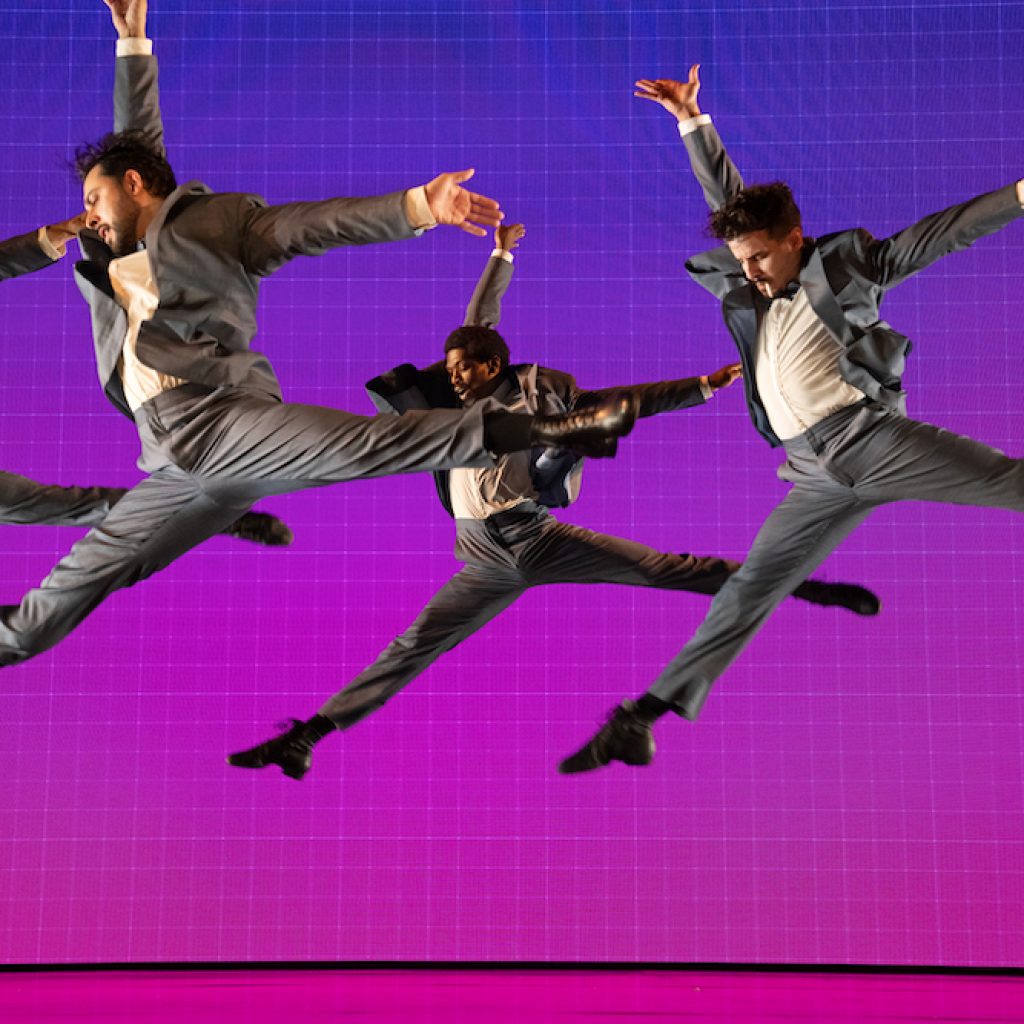
What has the rehearsal process been like?
Cilento
“The rehearsal process has been extensive. We’ve gone through two reconstruction periods that included reproducing all the DANCIN’ material as well as going into movies, TV specials and his other theatrical work. It was very tedious and complicated, and was especially challenging to find footage to make connective material. Although poorly preserved, the Japanese production at least gave us a roadmap of the show. Then my body’s sense memory came in to help me fill the gaps.”
Love
“I love Wayne. He’s so riveting. So passionate. I feel like we’re getting a sense of the spirit of Bob through him. Bob demanded a lot of his performers and so does Wayne. He’s pickier about the numbers he was specifically in because he knows how it feels in his body and how it wants to be seen and felt and delivered. And he’s so emotional. Oh my gosh, he cries a lot. He’s just so giving as a director and person. He always checks in to see how we’re feeling and has really created a safe space for us to try new things, which is especially welcome for people who are always putting themselves in vulnerable positions as performers. The creative team doesn’t expect it to be perfect on the first or even the fifth try. All they want is for you to keep trying. In a space like that, every day feels like Christmas.”
Hyman
“The process has been insane in the best way. It’s been a lot of discovery, which I wasn’t expecting. I thought I was going to walk into a room and be given a lot of detailed choreography, but what’s cool about working with Wayne is that he allows us to bring ourselves as artists. None of us have similar resumes, and he’s given us the liberty to tap into what we each have to offer separately. There’s the universal goal of putting on a show of Fosse’s work and tending to his legacy that coexists with us having our own voice through movement.”
What are some of the challenges you’ve faced with the show both personally and as a cast?
Love
“I struggled personally with ‘Big Spender’ because we’re sex workers in that number, and I don’t generally show my sexuality in a performance mode. I’ve never been in a show that requires me to do that, nor is it my first way of expressing myself. It was fun to tap into, but a little uncomfortable. I added a cigarette to my track because it helped me feel more genuine. If I were a sex worker, I’d want a cigarette on the corner. I think Fosse said it, or maybe Gwen did, that you’re not putting on sexy –– you are just sexy being you. That’s been helpful, not having to ‘put it on.’”
Hyman
“The last time there were all principal dancers on stage was when this show ran in the 1970s. Being a principal understudy is different than swinging an ensemble track; because each track is a principal, the stakes are much higher. Being a principal on a Broadway stage was always a dream, but I never thought I’d get to do it as a dancer, which I’ve been training for my whole life. It’s a huge responsibility that I don’t take lightly. As an offstage, I’m required to know several tracks, and I’ll never forget when I got the call that I was going to be on stage for the first time. (It was super last minute; understudies never have enough time to prepare.) Being thrown into something as crazy and difficult as DANCIN’ is daunting. Even with all my flashcards and offstage preparation, I don’t feel like I officially have a track under my belt until I learn it in real time by performing it. When I walked in as an offstage, I was worried. I even expressed my fears to the creative team, but they reassured me and they were right. Each time I step into a role, I’m able to enter it more deeply and learn something new from it.
Although I come from a concert dance background, I’ve definitely shifted into a more musical theater mentality over the past few years. It was a challenge to tap back into the concert dance mentality and style. To retrain my brain and body to do that kind of work. Watching DANCIN’ is like watching a concert dance piece on Broadway. I’m grateful to have had the opportunity to marry musical theater with my concert dance background. Another huge challenge is honestly just stamina, and holding each other in the space because the days are super long and the show is undeniably super difficult. As a cast, we really encourage each other. I think casting did a great job not only casting incredible dancers but grounded, intelligent and empathetic people.”
What are some of your favorite numbers and why?
Cilento
“Well, I like them all, I have to say, but I’m partial to ‘Bojangles.’ I think it’s a beautiful piece of theater. I don’t want to say too much about the ballet I did, but I think it’s well structured and I’m really proud of it. It’s an amalgamation of lots of Bob’s choreography.”
Love
“I love ‘Big Noise.’ I feel like aside from the fact that we do a lot of pelvic thrusts, people wouldn’t be like, ‘Oh, that’s Fosse.’ ‘Snake in the Grass’ is also amazing –– so riveting and specific. And ‘Big Deal’ –– the energy is high, and the movement is so rewarding and fun. And it’s hard as ever. The cardio is nuts. All the numbers are so much bigger and full of life than the little nuances Fosse is known for.”
Hyman
“’Big Noise’ is great, but I love watching it more than doing it because it’s super tiring and doesn’t look as hard as it is. That’s how a lot of Fosse’s work is. Like I only did head rolls in this number… Why am I sweating so much? But your brain is working so hard with the counts and everything in ways audiences might not be able to tell. Part of Fosse’s brilliance lies in his ability to make movement super relatable but complex from the dancer’s perspective. I also love ‘Beat Me Daddy,’ ‘Big Deal’ and ‘Sing Sing Sing,’ which is jazz in the literal definition of jazz. Cool suits and sparkly dresses and the drumset onstage playing right behind you. You can feel the music from underneath you.”
What role does the music play in DANCIN’?
Cilento
“Huge. Huge amounts. When creating the show, I knew it’d be ludicrous to pick music I liked. I could’ve done that, but then it wouldn’t be DANCIN’. So, Jim Abbott reorchestrated and reimagined all the music for our generation. Made it really rock.”
Love
“The music is everything. You can feel the fact that Fosse was a tap dancer in the precise timing of the movement with the music. You got a 6, then you got a 12, then you got a 4, then there’s 12 8s, then it goes to a 9-10-11, then back to an 8. Our chant for the show is ‘keep counting’ because if you miss a count, then you’re off. If one musician is off, we’re off. It’s a very music-forward show.”
Hyman
“The music is iconic, and in this show, the choreography and music are married. You can’t do anything without explaining that this is on the bass drum and that is on the trumpet. In numbers like ‘Sing Sing Sing,’ sections are literally named after the instruments. It makes my soul happy to know that movements as small as wrist flicks correspond with the instrumentation.”
Any closing remarks for your eager audiences out there?
Cilento
“DANCIN’ was definitely ahead of its time. No one did a dance concert on Broadway but Bob. My task was to reintroduce it to a new generation of audiences. We’ve come so far in entertainment, and you can’t ignore it. Instead, I tried to embrace it, make it fresh, give it a look, and I’m proud of that.”
Love
“It’s nice to show up as different characters, but to just be seen as me and feel like I’m enough is something I’ve never experienced before as a performer. I’m so grateful to DANCIN’ for that. Anyone who comes to see the show will leave with their spirits lifted. DANCIN’ spreads joy and honors Bob’s legacy like no other show.”
For more information and to book tickets, visit dancinbway.com.
By Charly Santagado of Dance Informa.


